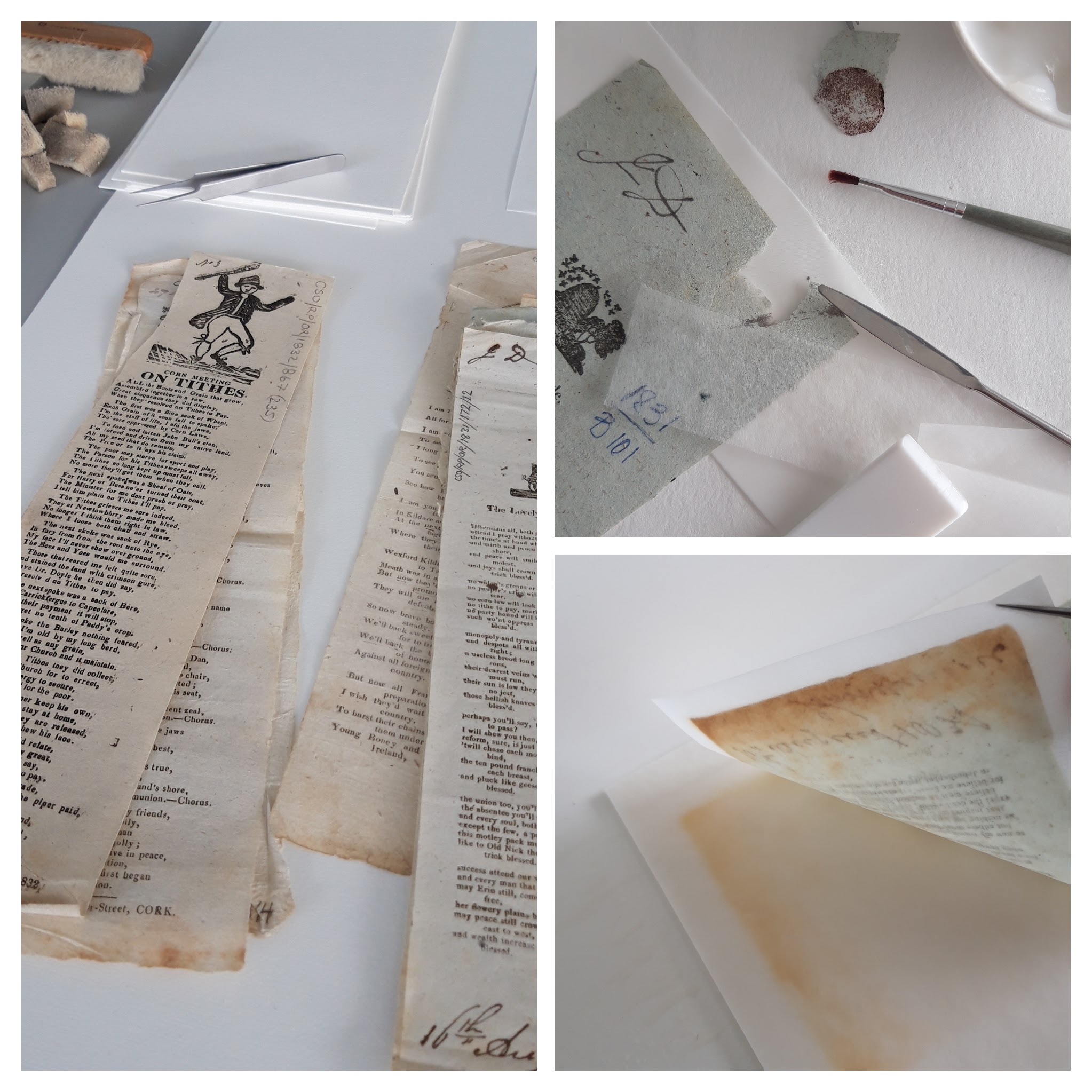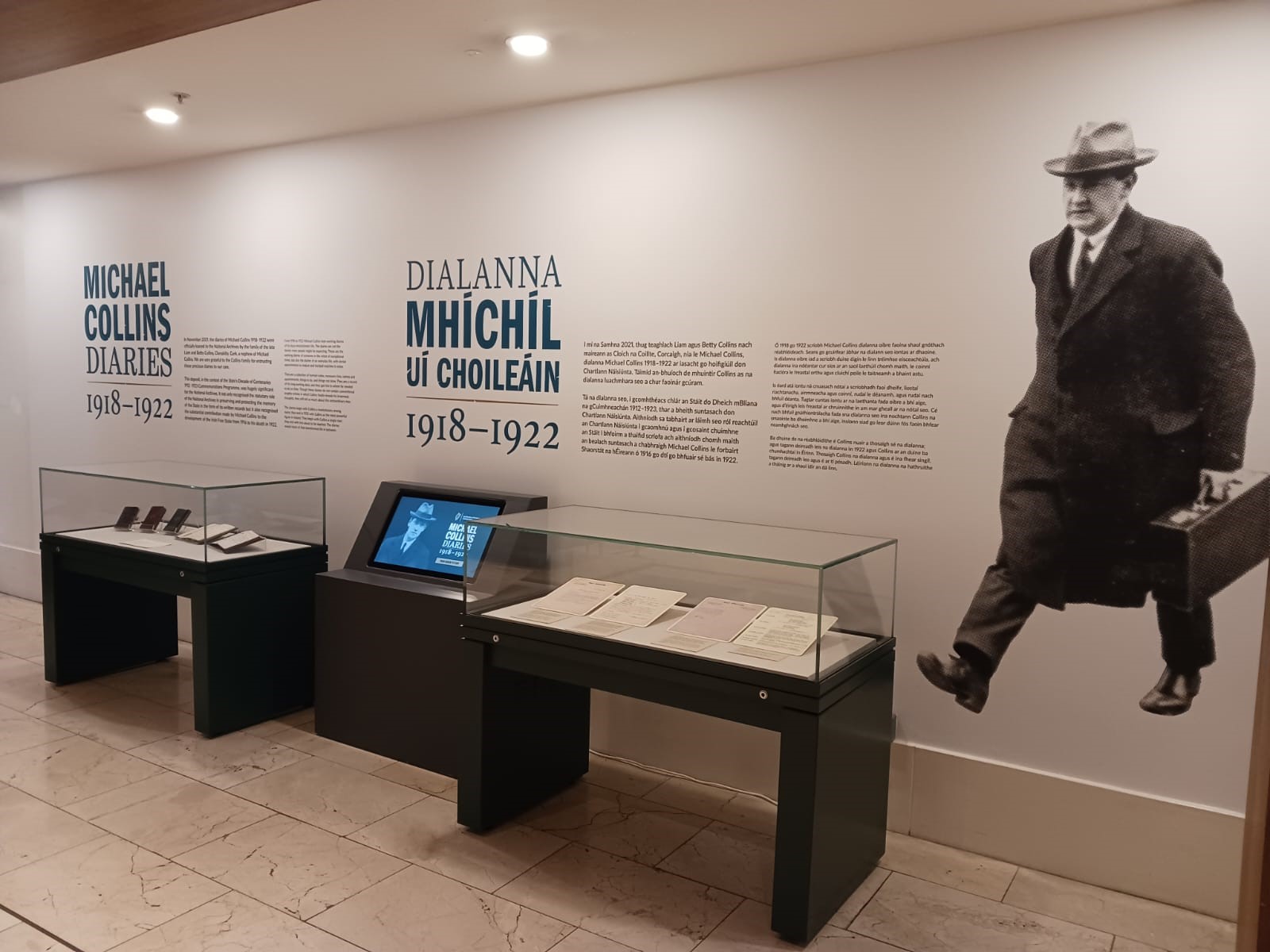Behind the Scenes
Behind the Scenes: The conservation of ballad sheets

Conservation of ballad sheets for the online exhibition ‘Singing Sedition: ballads and verse in the age of O’Connell’.
During the early part of the 19th Century ballad sheets containing the lyrics to songs and verses on topical subjects such as religion and politics were widely produced and circulated. Also known as penny ballads or broadside ballads, they were sold cheaply and therefore had to be cheap to produce.
These narrow strips of paper are printed on one side with small type and a woodcut illustration. A considerable quantity were found folded and tucked carefully within letters sent to the Chief Secretary’s Office at Dublin Castle in the 1820s and 1830s, and these form the basis of our current online exhibition.
In preparation for the exhibition, a small selection were highlighted and brought to conservation for treatment before digitisation. As often happens when a series is highlighted it provides an opportunity to look at the housing of the material to improve long term preservation and ensure continued access to it.
Production
From visual inspection, clues into the production of the ballad sheets were deduced. Often the ballad sheets have a clean blade cut along one side and a build-up of paper pulp (a deckled edge) along the other long side. It might be suggested that these ballad sheets were printed on the offcut of large sheets that had been discarded on the printmaker’s floor.
The composition of standard black printing ink has changed remarkably little over the centuries. Most contain a carbon black pigment and vegetable oil, usually boiled linseed oil, so the print is clear and shows little signs of ageing over the years.
A variety of different types of wove paper had been used, a range of colours, blue, ivory, white or off-white and the thickness of the paper varied as well; some were very thin and delicate. The uniformity comes from their format and general size, 90 mm x 325 mm.
Condition and treatment
The ballad sheets were usually folded, crumpled at the edges, often with a build-up of dirt along the lower edges, a few had small tears and creases.
The light dirt on the surface of the papers was removed with small squares of smoke sponge; a conservation eraser. To reduce the soiling in the papers, it was decided to move on to a wet cleaning method; blotter washing. This is a method where the document is placed on one or two layers of wet blotting paper, which acts as a water reservoir. The more layers of blotting paper, the more water can be added.
The ballad sheet was placed in a flat tray on the wet blotting paper stack and left for ten minutes during which time the soluble elements (dirt) migrated out of the document into the blotting paper. The blotters were exchanged for clean ones until no further discolouration transferred on to the blotters. It should be noted that a layer of silk screen material was placed between the document and the wet blotter to make it easier to handle and lift the wet piece of paper during the treatment. After blotter washing the documents were dried and pressed flat.
One ballad sheet was in two pieces held together with sellotape, the plastic tape had degraded to the level where it was simply falling away from the document, although the adhesive had left quite a stain behind. After blotter washing, a 12 gsm OK tissue; a Japanese Kozo tissue was used as a backing paper to keep the two pieces of the torn ballad sheet together.
Improving housing
To allow the documents to remain flat a simple single creased paper folder was made from an A3 sheet of archival paper, which was trimmed to size (15cm x 36cm). The ballad sheets were held in place with two Mylar V hinges, like straight photo corners, that they slide into. Using this method means access to the back of the sheet is straightforward, which is important as there can be annotations on the back of the sheet.
The digitisation of these ballad sheets is an effective preservation tool and it provides the means to increase the awareness of the ballad sheets within the collection through the online exhibition and social media posts.
To see the results of this work, and find out more about the Ballad sheets check out the online exhibition https://www.nationalarchives.ie/article/singing-sedition-ballads-verse-age-oconnell/
Zoë Reid, Senior Conservator


